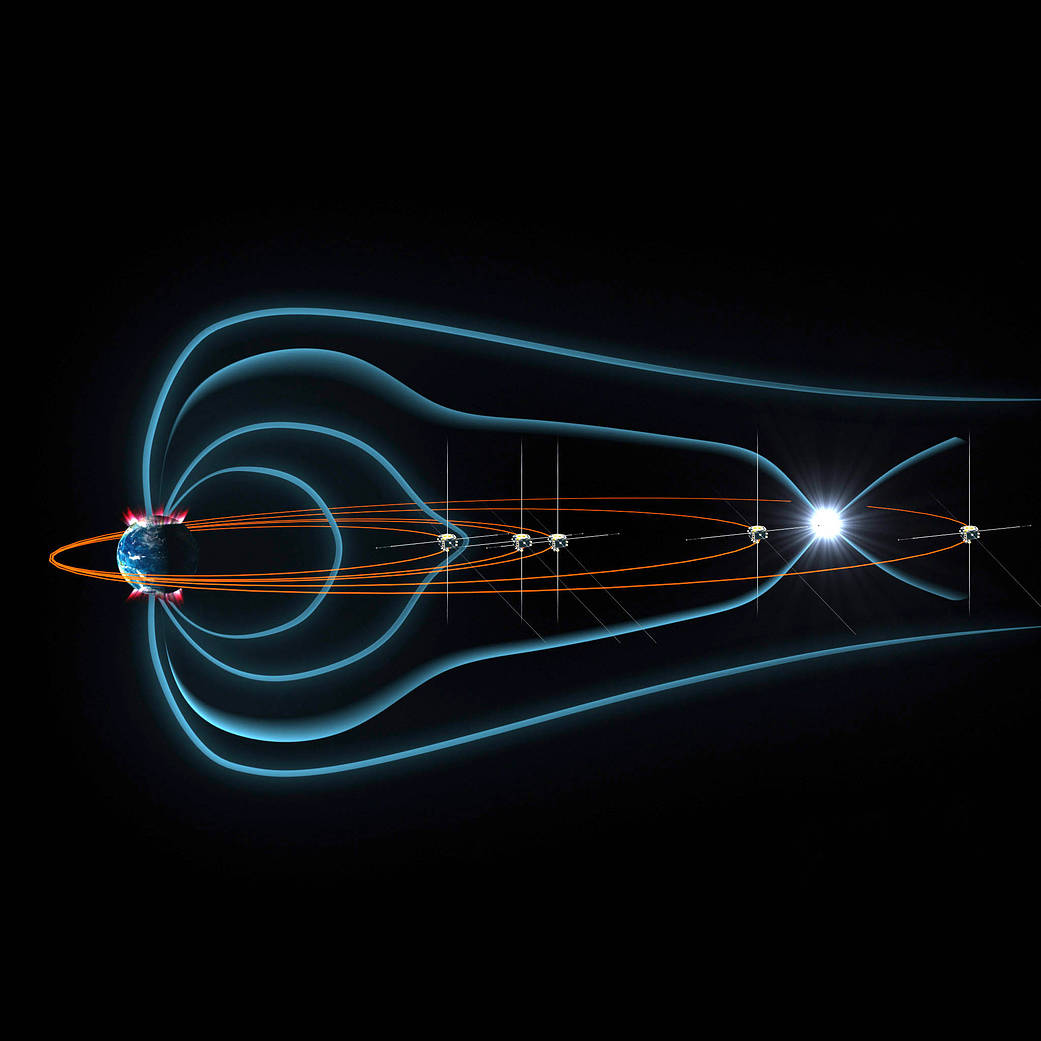THEMIS’ mission is to help improve the understanding of severe space weather effects on Earth. THEMIS (Time History of Events and Macroscale Interactions during Substorms) is designed to discover what causes intense displays of the aurora (northern and southern lights), called substorms. Just as severe thunderstorms are accompanied by hail and tornadoes, it is believed that some of the most intense space storms – the ones producing the most penetrating radiation – are accompanied by substorms.
This artist’s concept of THEMIS’ main orbits is represented by red ovals. Blue lines represent the Earth’s magnetic field. The white flash represents energy released during substorms. The THEMIS spacecraft will line up at midnight over the United States every four days. The distances range from about half the distance to the moon to about a sixth of the distance to the moon. This position will help scientists pinpoint exactly when and where substorms occur.Image credit: NASA
1 min read



























